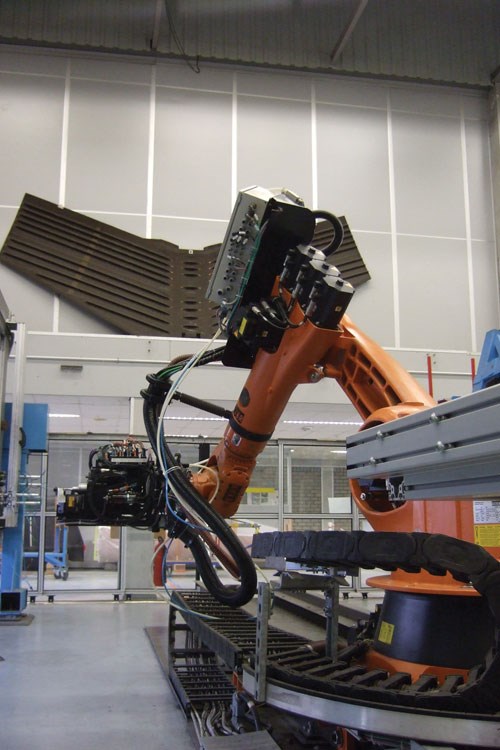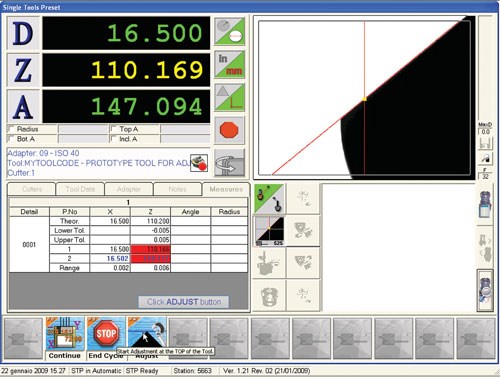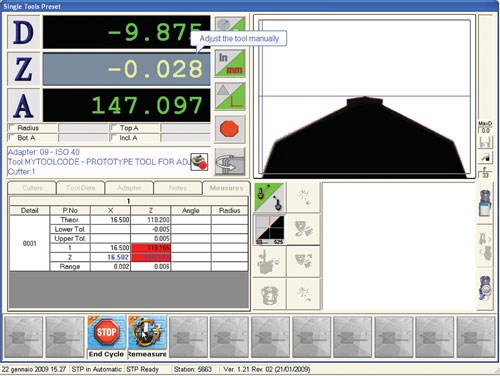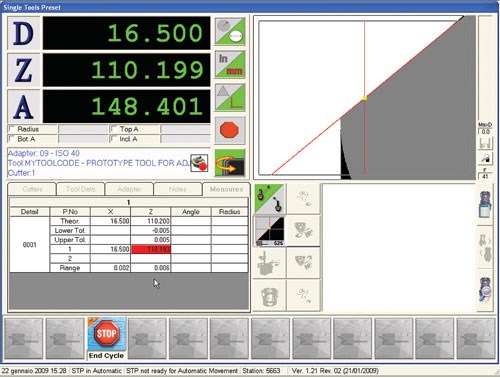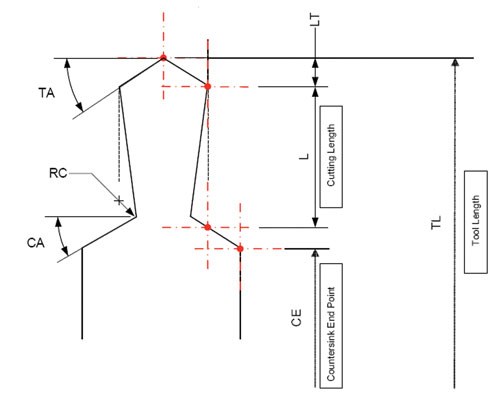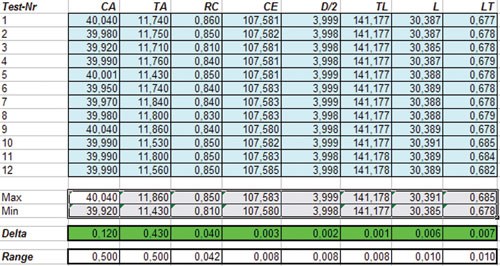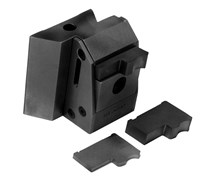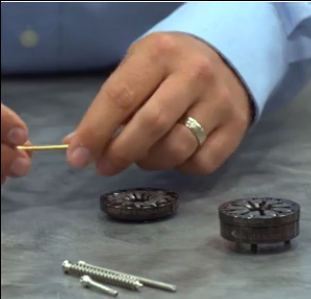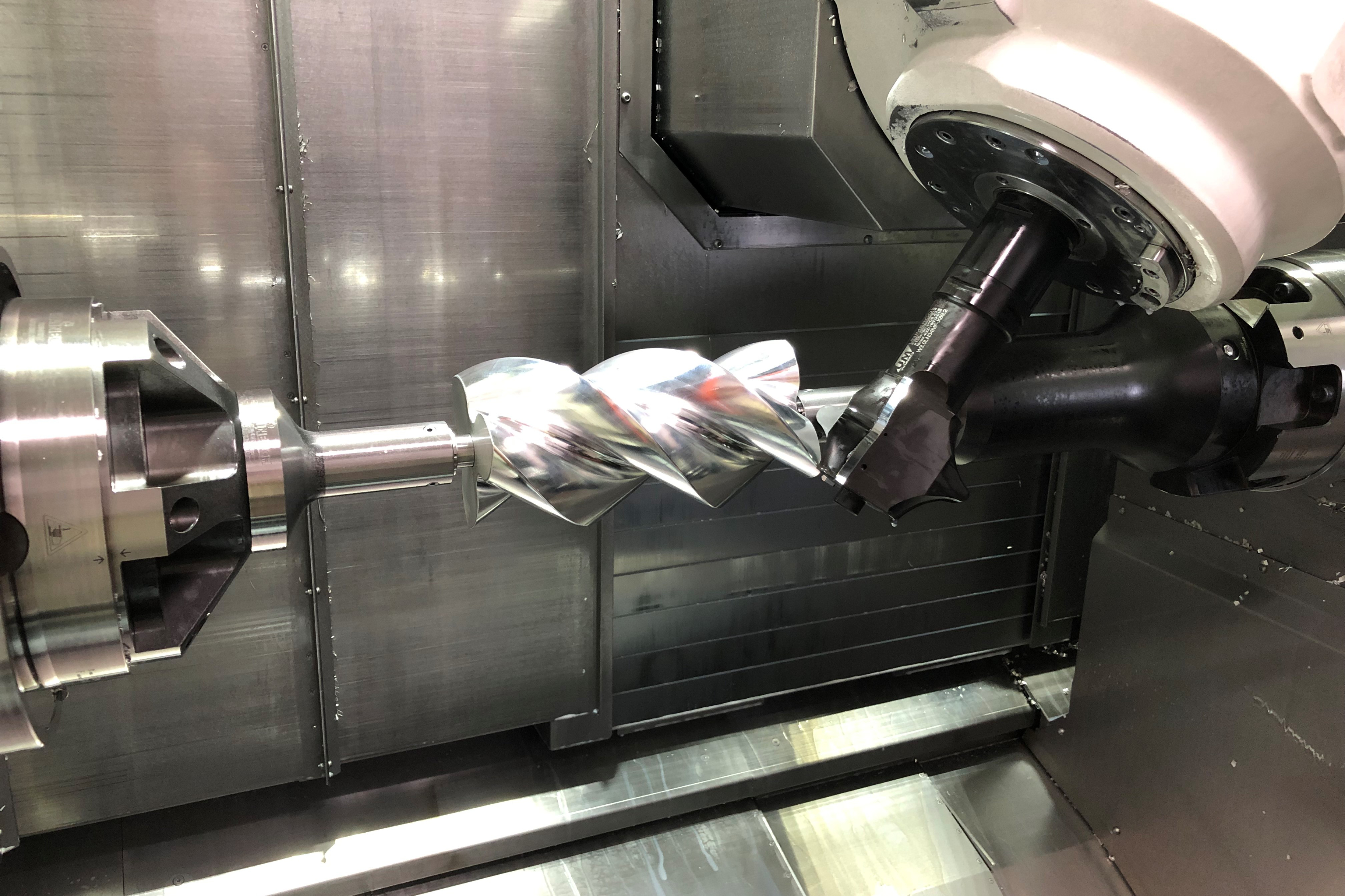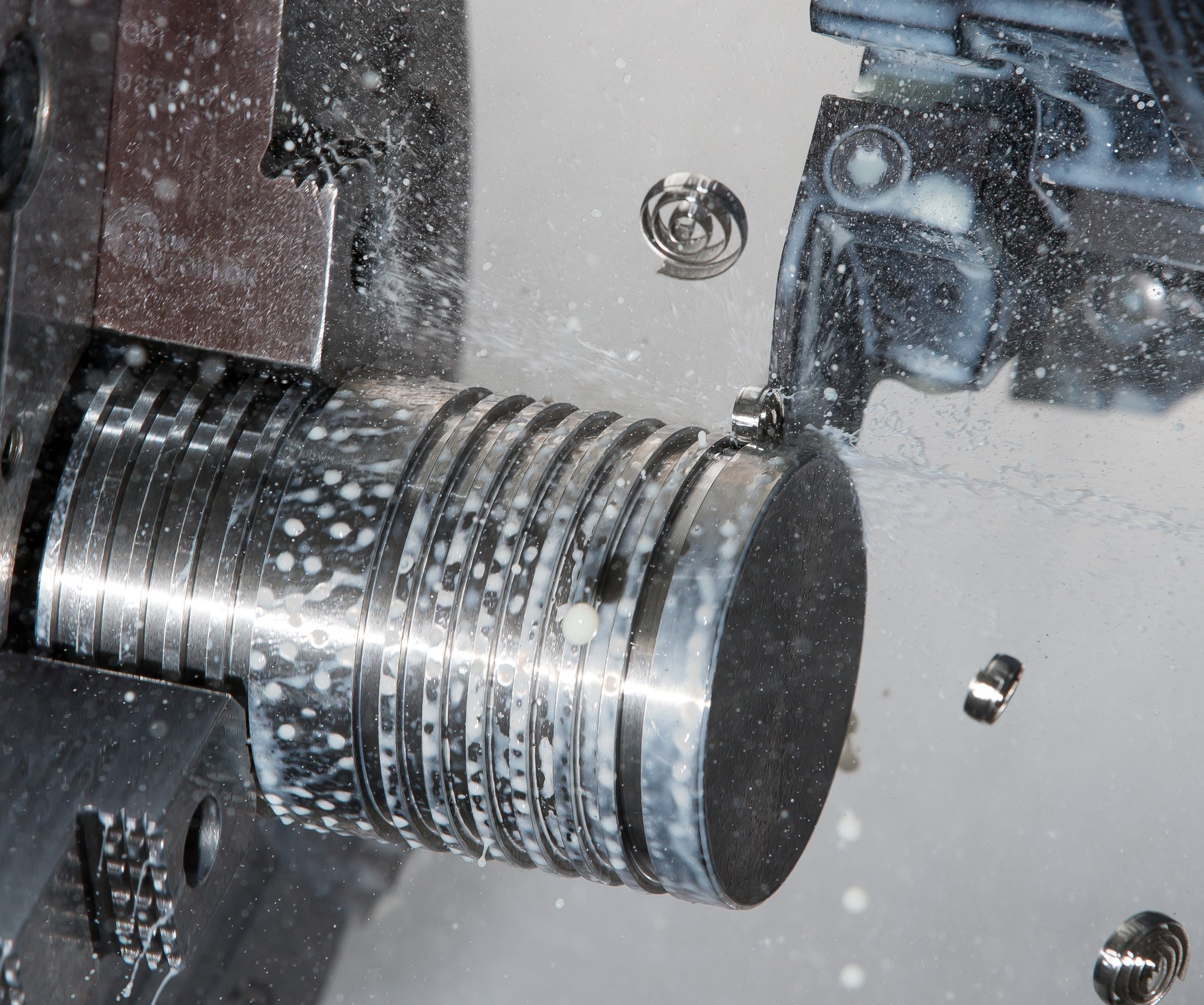Presetting Process Cuts Scrap, Rework
Aerospace manufacturer Fokker Aerospace Group relies on Speroni’s STP46 tool measuring and presetting machine to ensure that step drills used to cut and chamfer holes on aircraft flap skins are within tolerance and set to the proper length. This machine and custom procedures developed by Speroni enables the aerospace manufacturer to avoid cost and downtime resulting from reworking or scrapping these large parts.
Rework or scrap can take a toll on the profitability of any job, but getting it right the first time is especially important for large parts that require a large number of operations. Fokker Aerospace Group, a manufacturer of commercial and military aircraft components in the Netherlands, recently optimized a critical drilling and chamfering process to avoid wasting time and money on one such series of parts. Key to this optimization was a measuring and presetting machine from Italian manufacturer Speroni that ensures the company’s tooling is properly set to machine within tolerance.
Fokker Aerospace Group has more than 90 years of experience in producing high-quality components for military and civil aviation applications. Among the many parts produced at its production site in Papendrecht are flaps for both private and commercial aircraft from manufacturers including Boeing, Dassault and Gulfstream. Each flap skin requires drilling nearly two thousand holes to accommodate fasteners that mate the skin to the aircraft’s frame. The most challenging part of this operation—besides drilling each hole in the correct position—is ensuring that the fasteners are flush with the flap surface. This is critical because the flap needs an even surface to pass final inspection.
Featured Content
The decisive factor in keeping the fasteners properly positioned is the chamfering of each hole. Too small, and the fasteners would protrude past the top of the flap skin. The chamfers could be reworked, but doing so for thousands of holes would require a significant time investment. Cutting the chamfers too large, which would cause the fasteners to sit beneath the surface, would be an even worse scenario. In that case, no amount of rework could remedy the situation, and the expensive part would be lost.
Considering the time and effort that goes into each of these valuable parts, the company sought to improve the process. The first step was to automate by installing a robot that can complete drilling and chamfering operations in slightly less than three hours per flap. However, the company still needed a way to guarantee that the step drills used for this process were in tolerance and set to the proper length within their Schunk Tribos HSK 32 toolholders. Other than tool length (TL), the most decisive parameters to be measured on the drill are the cutting length (L) and the countersink end point (CE). This is a challenging task because both of the latter points are located on the drill’s 40-degree chamfer angle (see the diagram on the right side of the page).
用适当的数据向机器人的控制器喂食,以使钻孔过程保持公差,这将需要一个系统,不仅可以在底环鞋持有人内预设工具,而且还需要执行完整的测量周期。在搜寻市场后,该公司选择了Speroni的Esperia STP46工具预设和测量机(在美国,Speroni设备可从总部位于伊利诺伊州的Hoffman Estates提供,位于伊利诺伊州的Big Kaiser Precision Tooling)。“这对我们公司来说是一个漫长的项目,但我们终于找到了Speroni的合适供应商,它不仅在意大利内部建造了预设和测量机器,而且还可以根据我们的特定需求自定义系统,”Fokker Aerospace Group的初级流程专家Roy Helmos说。
An example of this customization is the integrated tool identification option for data output after the measuring cycle. To help avoid scrap and rework, Speroni developed special warnings that notify operators when any parameter is out of tolerance, preventing them from writing faulty data to the chip. "We had some special wishes in this regard, and the software development department at Speroni reacted promptly to our demands," Mr. Helmos notes.
福克的另一个Speroni执行特殊任务Aerospace Group was the development of a three-step procedure that enables operators to easily set the tool at a given diameter at the 40-degree chamfer to a specific length. (Photos depicting each step are located at the right side of the page). First, the machine detects the highest point of both flutes and measures the length at a given diameter on the chamfer of the drill.
Then, the measuring machine automatically detects the top of the drill to actually set the tool to the desired length. The length axis switches to a differential value that shows the operator exactly how to adjust the tool to set it within tolerance. Using the top of the drill makes it much easier to set the tool’s length, the company says.
Finally, the machine positions its camera back to the chamfer, re-measures the length at the given diameter and notifies the operator whether the length has been set within tolerance. The specific routines used to inspect these tool features are accessible to operators through a database of more than 150 icons.
Fokker Aerospace Group has strict standards for the installation and acceptance of any machine. The measuring machine was pre-accepted at Speroni’s facility in Spessa, Italy before being shipped to Papendrecht and installed near the drilling robot. Once installed, the machine was checked and correctly aligned before undergoing an acceptance test. First, the tool had to be set to the correct length using the procedure described above. After that, the tool needed to be measured in several steps to establish 8 different parameters, including all of those seen on the diagram at the upper right of this page as well as the cutter’s diameter. Measurements had to be accurate within a given range, which was different depending on the specific parameter but never any larger than ±0.005 mm.
However, these tight tolerances weren’t the only demands placed on the machine. To evaluate repeatability, the tools were unclamped from the spindle and re-clamped before every cycle, Mr. Helmos says. He concludes that the results of the setup and measuring procedure as well as acceptance test conducted on the shop floor proved that the machine’s precision and repeatability were more than enough to meet the company’s requirements.
According to the manufacturer, the STP46’s performance can be attributed to its aged and balanced cast iron base combined with high-precision, linear steel guideways. These features keep the machine stable and geometrically aligned, even when installed next to production machines on the shop floor. "Speroni showed that it is not only very flexible when it comes to customizing the software according to our needs, but also—and this is most important to us—that the machine is capable of measuring precisely, within microns."
相关内容
Machining Exotics
Production machining has changed from large runs of parts carved out of free machining materials to smaller runs of parts from much more difficult to machine materials. Learn how to adjust to this challenge.
带有自动工具磨损补偿的单通行证磨练系统
Single pass honing, also referred to as diamond bore sizing, is a good way to produce parts economically when the bore is small or has thin-walled members that need to be honed.
Automated Cleaning System Improves Productivity
This rotary basket washer drastically reduced the number of operators tending to the cleaning process as well as removed the bottleneck from that station.




